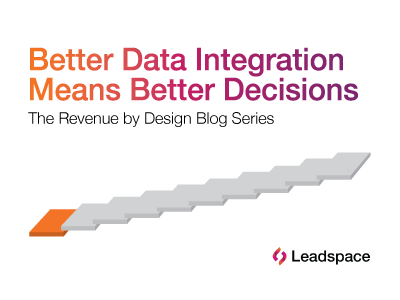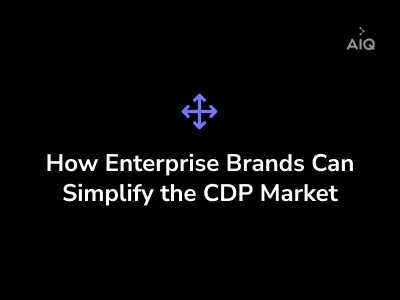3 Reasons why Retailers should invest in a CDP to improve enterprise-wide ROI leading to better payoffs
January 27, 2022Globally, customer-centricity has become one of the cornerstones of the retail industry transformation. One would think, it’s the Walmarts of the world that are setting high customer expectations in retail experiences. Not at all. It’s actually the tech giants that have shifted the paradigm and redefined buying experiences. Leading the way are Google (Omniscient, Omnipresent!), Netflix (Disruptive Content Viewing recommendations!) and Amazon.1 And what about the introduction of the familiarly deep voice of Amitabh Bachchan on Alexa? Innovative to say the least and an absolute bestseller marketing strategy!
With such stratospheric expectations, it is only natural that retailers worldwide are investing in AI-powered solutions. These are built on robust customer data that promises a stellar end customer experience. Of course, challenges in this spectrum aren’t new. Cloud computing becoming de rigueur and ubiquitous. Digital transformations was accelerated by the Covid-19 pandemic, resulting in changed consumer behaviour. Harnessing the best of customer data to take ‘intelligent’ decisions is the need of the hour. But the real issue is about the competing claims and varying tech offerings that promise the moon, but fail to achieve (flatter to deceive) when it comes to results.2
Customer Data Platform (CDP), are the new kids on the block and in the rather over-crowded MarTech space they have definitely caught the fancy of all. Despite a purported market size of USD 1.6 Billion3, there is still confusion and hesitation on part of the buyers, when it comes to the actual advantages of investing in such a platform/solution.
Based on multiple successful case-studies and applications from across global retailers, let’s look at three ways in which the CDP has generated massive positive payoffs not just for the marketers but for the entire enterprise.
- Find, Grow and Retain the “high-value” customers
A CDP can help identify your ‘best’ customers to engage with. Here are three fundamental aspects of how it enables this for a marketer.
- Create a single view of the customer: CDP unifies data from every single customer touchpoint across the enterprise to create what is known as the ‘Golden Customer Record’. This enables building up in-depth profile of every individual customer to start identifying the right behaviours/opportunities for growth, retention, loyalty and lifetime value.
- Act on Real-Time Customer Behavioural trends: CDP helps the marketers capitalize on those ‘Moments of Truth’ during a customer journey and ensures improved engagement, leading to faster conversion. Use cases can range from the more common cart-abandonment interventions and, on a shopping app using personalized in-app banners or push notifications leading to more complex journeys that could string together his search experiences, search terms and personalized recommendations. Based on this, marketers are orchestrating a triggered email that is also dynamic and depending on the time he/she opens their email.
- Ensure campaign success based on optimal audience lists: CDP drives analytics-based decisioning for multiple use cases. Say, for example, a retailer plans to introduce a new product and launch a promotional campaign for the same. CDP helps identify the most appropriate campaign audience for the same, with the help of lookalike profiling and finally give an appropriate audience that has a higher propensity to buy the new product/category or brand that one is promoting.
- Increase Marketing Efficiency and Effectiveness
CDP literally becomes the ‘brains’ behind all marketing operations leading to precise targeting through better knowledge of customer needs. This has an impact both on the top-line revenue through improved metrics like frequency and on the average order value that can be influenced by such optimal marketing influences. What a CDP also focuses on, is improvement in the bottom-line margins through multiple cost-saving efficiencies. Here are a few examples:
- Better Managed Data – By unifying relevant data from multiple silos into a single purpose-built ‘lake-house’ for the marketing team’s end-usage.
- Cost Savings through Improved Marketing Performance
- Decreased cost of managing creatives by using template libraries for creatives
- Optimizing your paid media campaigns by the use of Custom Audiences with the right set of segmentation/attributes for all re-targeting campaigns on GA/FB/ etc. This leads to decreased CPA on all your performance marketing initiatives.
- Marketing Automation leads to faster Turn-Around Time for your campaign go-live – and this can be achieved across multiple types of customer journeys (E.g. On-demand CRM, trigger base, lifecycle based, drip journeys etc)
- Improved App performance through native personalizations on the mobile app and lesser development efforts for any campaign requirements from external development resources/project management etc for the technology teams.
- Amplify and experiment with the existing marketing technology stack
With a CDP at the centre of your MarTech, retailers can focus on building out a best-of-breed stack to understand what combinations can bring in the best results; all this without any disruption to customer experience. They can use the CDP as a central point of defining all customer experiences, including say, a new personalization engine that powers experiences on their app or change the underlying platform that powers their ecommerce engine etc.
Conclusion
Gartner defines a ‘Smart-Hub CDP’ as one of the most progressive types of CDPs.4
The potential benefits of such a customer-centric master mind solution is not just for the marketers but also for the entire organization focused on deriving values by improving top-line growth (incremental sales) and staving off costs (bottom-line optimization) to bring in the best bang-for-the-buck from investments.
As we move into a world with fewer cookies and other identifiers, maintaining accurate measurement will depend heavily on the intelligent use of first-party data, privacy-safe techniques like data aggregation, and machine learning models.
A CDP gives marketers all of these, in an easy-to-use interface. The marketers who thrive and succeed, will be those who act on it and adopt it today. Are you one of them?
References:
- https://www.forbes.com/sites/shephyken/2021/08/15/the-netflix-experience-is-the-new-b2b-standard/?sh=381892b939d7
- Aberdeen-Reltio report on benefits of unified customer data – https://www.reltio.com/resources/aberdeen-unified-customer-data/
- CDP Institute report – https://www.cdpinstitute.org/news/customer-data-platform-industry-accelerated-during-pandemic-cdp-institute-report/
- Gartner Research, Apr 2020: A Guide to What is — and isn’t — a Customer Data Platform


